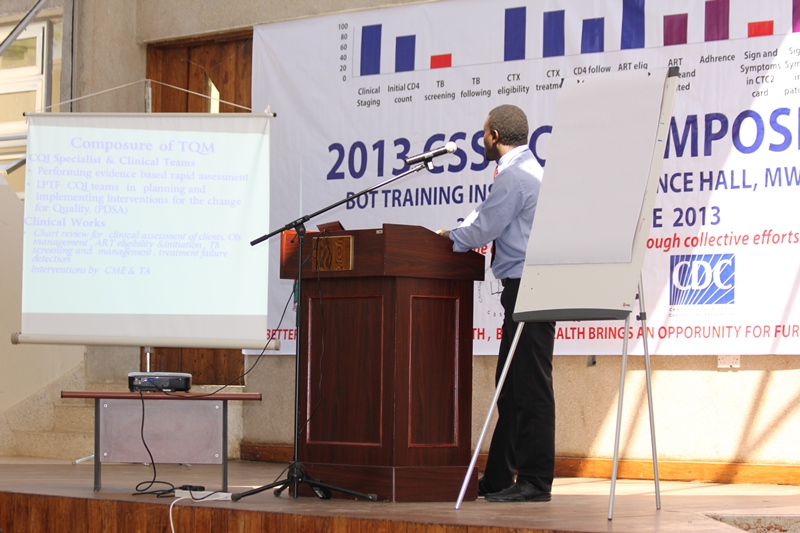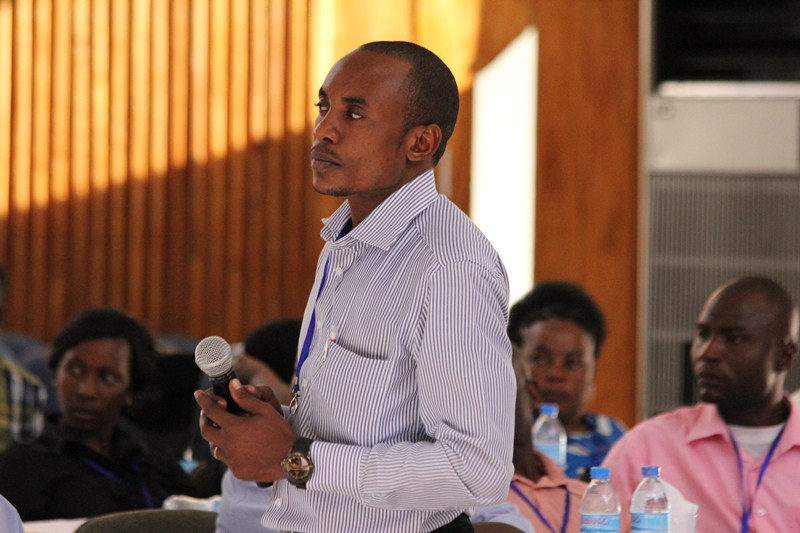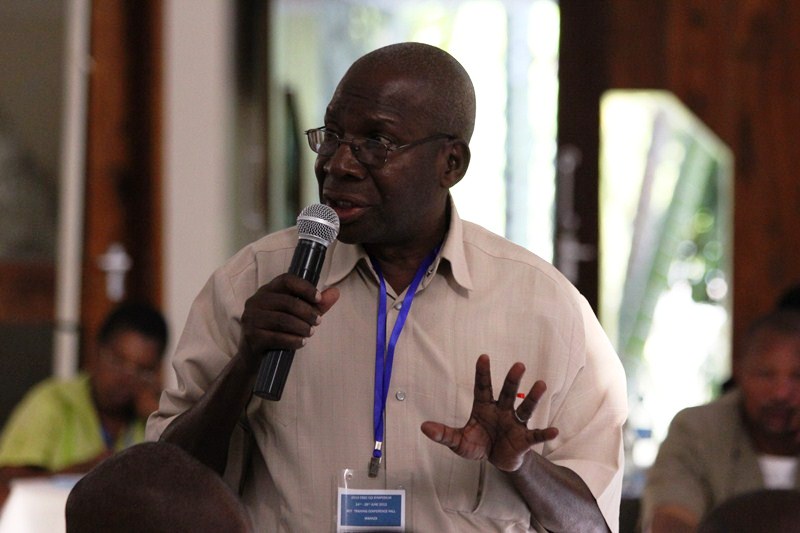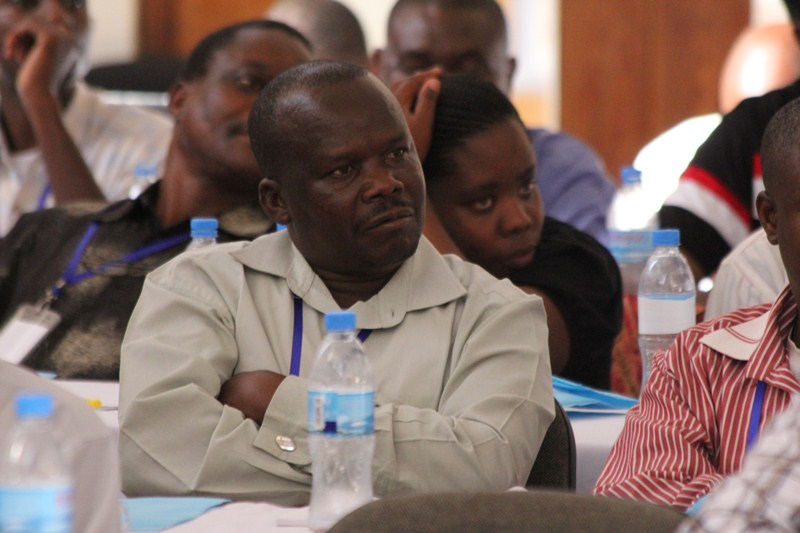BACKGROUND
CSSC is one
among the CDC Local Partners (LP) in the implementation of comprehensive HIV care and treatment programs in
Tanzania. CSSC is engaged in the implementation of the ART Program entitled Implementation
of Programs for Prevention, Care and Treatment of HIV/IDS in the United
Republic of Tanzania to increase Local Capacity and sustainability by engaging
Local indigenous partners under US President Emergency Plan for AIDS Relief
(PEPFAR). The Program implementation
is coordinated by CSSC in close
collaboration with Regional and District Management teams in Mwanza and Rorya
District in Mara regions respectively. The Commission supports the provision of
integrated HIV prevention, care, treatment and support services
in 8 districts of Mwanza region and 1 District - Rorya in
Mara Region. The services are provided at Local Partner Treatment Facility
(LPTFs) levels through qualified health care workers and at the community and
household levels through trained community home based care service providers to
enhance continuum of care.
From the beginning of HIV and AIDS
care and treatment program in Tanzania, many efforts havebeen done to enrol
clients on care and treatment services. Up to December 2012, the country
enrolled a total of 942,142 HIV clients
into care and among these and 530,118
clients were on treatment. However120,372(22.7%)
clients who were initiated ART were lost to follow up. In Mwanza region up to March 2013, a total of 85,320 HIV clients were
enrolledwhere46,622 clients are on treatment and 8,889 clientswho were
initiated ART are lost to followup. Despite all the ongoing efforts to
strengthen the care and treatment services, there are a various health
facilities with big number of clients enrolled into care but not yet initiated
on ART though they are eligible (especially Paediatrics, Pregnant women and TB
patients). Also there is number of clients in the same facilities who do not
attend the services as scheduled. In Magu, Geita and Nyamagana districts in
total there are 5,403 clientswho are
eligible for treatment but not yet initiated on ART; 6692 clients who were initiated ART were lost to follow up (these three districts contribute to three
quarters of ART lost to follow up clients in the Region) and 10,043 clients were/are overdue and no
CD4 count done.
OBJECTIVE
The
objectives of this initiative include the following:
1.
To
bring back patients who are lost to follow up (LFTUs) to care and their
information updated.
2.
Appropriate
services are provided to all patients (with priority given to paediatrics and
Pregnant women).
3.
Start
ART to all eligible Pre ART patients according to National HIV/AIDS guideline
in the Region.
RATIONALE FOR INITIATIVE
This initiative will serve as a
reminder and an entrance for a number of clients who have been lost in the care
and treatment clinics to resume the services. In addition, this initiative aims
at increasing the number of HIV/AIDS infected children and pregnant women to
access HIV/AIDS care and treatment services in the region. Furthermore, this
initiative will improve quality of services in the facilities and outcome of
patients by initiating ART to all eligible Pre ART clients in the care and
treatment clinics.
Moreover, it will offer an
opportunity for influential leaders and the community at large to get reminded
on the importance of utilizing the available care and treatment services and
also to be closely involved in the fight for HIV free generation
METHODOLOGY
To address the above challenges,
CSSC through the ART project in collaboration with RHMT, all the respective
CHMTs and other implementing partners (BIPAI, LEAD, LIFE, PATH and MSD/SCMS) in
Mwanza has set a strategy to advocate and sensitize PLHA, HCWs andcommunity at
large to understand the importance of ART and adherence to care and treatment
services that are found and available at the majority of health facilities.
The sensitization process in
Mwanza region will involve the Region commissioner, District commissioners,
Influential leaders, health management teams, and other leaders in the Region
and districts, Media in region, drama and community groups, other stakeholders
and IEC materials. The involved groups will be informed about the objective of
the campaign and their role to sensitize the community and PLHA to return back
to care /visit health facility for testing and enrolment to care.
The implementation process will
be in phases starting with12 high volume facilities in three districts of Magu
(Magu DH, Kisesa H/C, Nassa H/C and Mkula Hospital), Geita (Geita DH, Katoro
H/C, Kharumwa H/C and Kashishi H/C) and Nyamagana (Sekou Toure, Mwananchi,
Nyamagana Hospitals and Buzuruga H/C). The next phases will scale up to cover
the remaining districts in Mwanza region. In this context, Geita has been
regarded as a district although it is a region because for the time being all
health services under this new region still receive support from Mwanza RMO
office.
During the implementation process
the following key activities will be done to attain the desired objectives:
·
Data
cleaning and validation will be done to have accurate information of active clients
on care that are eligible to start ART and those who are LTFUs
·
Managers
and leaders meeting will be done centrally and CSSC monitoring and evaluation
team will present the data from the selected facilities
·
Meeting
with HCWs from selected facilities will be done to mentor them on proper care
and treatment and prepare them psychologically to handle a big number of
clients during and after this initiative
·
Job
Aids will be developed/sourced and distributed to health facilities before and
during the implementation
·
At
the facility level, CSSC staff in collaboration with HCWs will identify clients
who are eligible for ART, in need of CD4 checking, and those who are lost to
follow up. Through HBC service providers and HCWs tracking of LTF patient will
be done. Also strengthening of linkage of CTC and all other feeder system will
be done as well as addressing the filing systems.Health care workers of all the
selected facilities will be closely mentored to make sure that all clients that
are eligible to start ART are timely initiated. Also mentorship on proper
handling of patient who return back to care will be done.
·
Protocol
for data security will be prepared and shared with all facilities to guide the
right use of data during the initiative.
·
Frequent PA ( radio, TV, etc) will be used before, during and after the
implementation
·
CSSC will communicate with CDC and MOHSW
through NACP to inform them on the matter
·
Launching
will be done at the start of the initiative with high level Guest of honour
·
Drama
and cultural groups will be used to
sensitize and educate the community at the start of the initiative and this will be continuous through support by
the districts
·
Scaling up to other districts/health
facilities will be done basing on the results of the initiative
·
IEC
materials like brochures, posters, dangles and other BCC materials with
educative message will be developed and used at the launching day and at the
facility level
·
The
PLHA will be invited to give testimonies and sensitize the community during launching
day.
·
Follow
up plan during the initiative process will be on monthly, quarterly basis.
TIME FRAME
The proposed initiative will
start with initial preparations starting from 10thJune 2013 and
official launching is expected to take place in mid July 2013 (proposed date is
16th July 2013) and thereafter the initiative will continue to other districts.
EXPECTED
RESULTS
1.
50%
of eligible clients will be initiated on ART in the period of three months.
2.
20%
of clients will return back to care and treatment in the period of three
months.
3.
20% of newly initiated ART clients will be children and at
least 95% of pregnant women tested HIV positive linked to CTC.
4.
Increase
the usage of appointment and MISSAP registers to all the facilities in the
Region.
5.
Strengthened
sense of ownership of care and treatment of HIV/AIDS program to leaders, HCW
and community at large.

































































